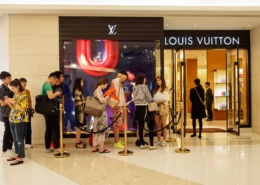Working Together to Fight Transnational Financial Crime
How public-private partnerships can achieve joint effects to counter human trafficking and protect our communities
📅 July 30, 2024
📅 July 30, 2024
“Money laundering, terrorism financing, and their predicate offences are fuelling instability, violence, and exploitation worldwide. Safeguarding financial integrity is vital to promoting peace and security, driving sustainable development, and shielding the most vulnerable.” – United Nations Office on Drugs and Crime announcement by Executive Director Ghada Waly, 13 May 2024
The United Nations identifies conflict and persecution, poverty and instability, lack of access to education and employment, migration and displacement, gender inequality and discrimination, natural disasters, and climate change, as creating conditions that result in vulnerability to human trafficking and exploitation.
These same conditions – social, economic, and political – are equally vulnerability factors in other offenses such as the illegal wildlife trade, environmental crimes, and abuse of human rights. In turn, they drive money laundering, corruption, and other financial crimes, creating an amplifying cycle of harm.
The public sector, private sector, and others committed to breaking this cycle each have visibility of different aspects of these crimes and the resulting illicit financial flows. They have different resources, data, and capability. And to take effective action, they must work jointly to disrupt financial crime and protect the vulnerable.
In this article, we will use human trafficking as a case study and focus on the financial flows to explore joint effects and the specific strengths of the public, private, and others. The same principles can equally be applied to fighting financial crime more broadly.
What are the differences between human trafficking, human smuggling, and modern slavery?
Human trafficking, human smuggling (also called organized immigration crime) and modern slavery are closely related.
Human trafficking involves the use of force, fraud, or coercion to compel a person into exploitative labor against their will. In some countries, such as the United States, “trafficking” does not require movement and survivors can be recruited and trafficked in their home towns or even their own homes. In other countries, such as the United Kingdom, “trafficking” requires movement between or within countries whereas “modern slavery” is used to refer to exploitation more broadly. Where “modern slavery” is used, it includes human trafficking, forced labor, sexual exploitation, and criminal exploitation.
For this article, we recognize that the term “slavery” has specific implications and context and therefore use “human trafficking” as the preferred term and with its broadest meaning.
Human smuggling involves transporting people illegally across an international border and does not involve coercion. According to the United Nations International Organization for Migration, one way to identify the difference is that smuggling violates the laws of the state whereas trafficking violates the human rights of a person. However, these distinctions may be less meaningful in reality because trafficking and smuggling are closely interlinked: smuggling places people in situations of vulnerability that can result in them becoming trafficked. For examples on how trafficking and smuggling are interlinked, non-profit Polaris provides several case studies.
“Human trafficking erodes the rule of law, the safety of our communities, the security of our borders, and the strength of our economy. This crime transcends borders and necessitates a global coalition to confront it – one that cuts across government, business, civil society and is founded in partnership between them all.” – Anthony J. Blinken, U.S. Secretary of State
As with all illicit financial flows, criminal networks seek to obscure the illegitimate origins of the proceeds by money laundering. It is the task of the financial crime fighting community to follow the money and identify the networks involved, a task made more difficult where financial flows or their predicate offenses involve cross-border movements.
Victims of trafficking often have many touchpoints with government officials and private sector businesses at their origin, in transit, and at their destination. Each of these touchpoints has access to different information that can uncover the networks involved, enabling action to be taken to protect the vulnerable. The examples below should be considered a snapshot rather than a comprehensive assessment, and there are variations by jurisdiction.
Border control and customs officials review identification and associated documents (passports, national IDs, visas) at the point of entry into a country. This may enable them to identify fraudulent documents which are one indicator of trafficking. Officials also speak with individuals which provides an opportunity to identify indicators of coercion or other unusual behavior, and to ask questions about how the person’s travel was financed. Financial details may be relevant to any subsequent involvement by financial institutions.
Law enforcement undertakes investigations either based on their own findings or initiated by suspicious activity reports (SARs) / suspicious transaction reports (STRs) filed by financial institutions. Law enforcement can obtain information from suspects, associates, victims, and through physical or electronic searches. The results may include financial records such as bank names, customer names, account details, credit or debit cards, digital asset wallet details, and identification documents. Law enforcement can request financial institutions to provide information to support their investigation.
A national financial intelligence unit (FIU) receives SARs/STRs from financial institutions and other sectors. The FIU combines the SAR/STR data from these institutions along with other data sources, and distributes relevant information within the financial sector and to law enforcement for further action. This can be to support specific investigations or it may be aggregated information in the form of typologies which are distributed across the financial sector. The FIU or law enforcement can also use SAR/STR as a data source for use in future investigations. Some FIUs also establish formal multilateral public-private partnerships to enhance financial intelligence sharing beyond the mandatory filing of SARs/STRs.
Financial institutions have access to customer profiles, transactions, and device data. Through automated processes and investigative techniques, they can identify unusual activity, which may indicate money laundering. In some cases, firms may be able to identify the predicate offense, such as human trafficking. Financial institutions can identify individuals, entities, addresses, device data, and those in the wider network. They report this to the FIU in the format of SAR/STRs.
Where the illicit proceeds have already been layered several times, the data may not be available within the bank to identify the underlying offense, whereas it may be possible for law enforcement to uncover it during their investigation.
While a financial institution only has direct access to transactions passing through its own network, regulations in some countries permit sharing client information directly with other financial institutions. Even where this is not permitted, it may be possible to share typologies or patterns, bilaterally or through public-private partnerships, since they do not include identifiable client information.
Engagement with public sector entities provides valuable information to a financial institution. For example, if law enforcement have identified that a trafficking route passes through specific countries and that payments to traffickers use a specific method or format, the financial institution can use these data points to enhance automated monitoring and investigations.
Global correspondent banks can be particularly well-positioned to see end-to-end financial flows associated with trafficking because they and their respondents operate in multiple countries.
Bank branch staff interact directly with customers and can potentially identify fraudulent documents at account opening, or indicators of coercion whenever a customer transacts at a branch. An example would be a “translator” who attends the branch with multiple different customers and appears to be controlling the customers’ actions.
Non-profits and community groups provide support and resources for trafficking survivors. While providing support, survivors may be willing to share information which can be used to identify traffickers and networks. For example, they might share that their identity was used by their trafficker to open a bank account or to apply for credit, which institution was involved, and why it was used. If this information is shared with government and financial institutions, it can inform their automated monitoring and investigations – not just to identify that specific network, but as a way to identify other networks too.
Survivors of trafficking should be engaged to take into consideration their perspective and experience, which informs both the public and private sector responses.
In addition to the financial sector, other sectors who must identify and respond to trafficking include transportation, telecommunications, medical and healthcare providers, hospitality, and the entertainment sector.
Human Trafficking: Joint Effect Case Study
To combat financial crime, all sectors must work together, both locally and globally to share knowledge. The case study below provides an example of how these joint effects can be achieved.
A large global bank identified that some countries in which it operated had risk factors for being the origin, transit, or destination point for human trafficking. As part of its anti-money laundering programs and to fulfill its community responsibilities, the bank decided to take a lead role in the financial sector response.
The bank added a module on human trafficking to its bank-wide AML eLearning program to raise awareness for all its staff, a total of several thousand people. The knowledge gained was applicable not just in their work but also in their lives too, providing them with skills to identify any potential indicators of trafficking within their community.
The bank also provided enhanced training for its staff in “higher risk” countries. At that time, Nigeria had been identified by government, working with academia and non-profits, as being the origin country of trafficked individuals. The bank operated retail branches in Nigeria and its staff were therefore uniquely placed to identify indicators of trafficking if traffickers or victims interacted with the financial system. To ensure the training was relevant, the bank engaged government and law enforcement representatives in Nigeria to identify country-specific indicators to include in the training.
The bank also participated in public-private financial intelligence sharing partnership (PPP) in key countries, including working groups on human trafficking. At the PPP, financial institutions, the national FIU, and law enforcement shared typologies such as trafficking routes and financial sector touchpoints, so that all participants could improve the accuracy and effectiveness of their response. Non-profits also participated to share their analysis from working closely with survivors. Sharing typologies complemented and enhanced the existing STR filing requirement for banks.
PPP member banks worked with national border officials to produce a checklist for use when interviewing potential traffickers and victims: the checklist was a short list of questions, reflecting the limited time a border official might have, and included questions to identify key financial information that would enable law enforcement and banks to respond more quickly.
In addition, to better protect the integrity of the wider financial system and build capability – including firms who were not PPP members – the PPP produced alerts on human trafficking, such as how fraudulent documents could be used, and provided training on human trafficking red flags to the wider financial industry including fintechs.
The PPP and member banks also supported capacity building initiatives for the public and private sector in countries and regions at higher risk of trafficking, providing training on investigative techniques and human trafficking red flags.
“Around the globe, an estimated 27 million people are exploited for labor, services, and commercial sex. Traffickers prey on some of the world’s most marginalized and vulnerable individuals – profiting from their plight.” – Department of State’s Trafficking in Persons Report 2024
The foundation of success in crime, including human trafficking, is to have the necessary capability in both the public and private sectors, across all countries involved. The transnational nature of criminal networks, the cross-border financial flows, and sometimes the international nature of crimes themselves, mean a unified response is critical.
To fulfil a financial institution’s responsibilities, the actions a compliance officer can take (in addition to regulatory obligations such as filing SARs/STRs) are:
While many jurisdictions have privacy requirements that restrict sharing of personal information, some information can still usually be shared. For example, it may be possible for a financial institution to share a typology, meaning a pattern of financial indicators or client characteristics that are indicative of labor exploitation – without revealing identifying personal or client information. This could be provided to other financial institutions, potentially via the Financial Intelligence Unit, so that other firms check their clients and transactions for matching patterns.
It may also be possible to use technology such as machine learning to support information sharing. For example, “federated learning” is a decentralized approach to training machine learning models. Under this approach, the learning model is moved to each of the nodes holding the data, such as local devices or servers within each financial institution. The model is then trained locally. In contrast with traditional models, federated learning increases data privacy because it does not require data from financial institutions to be centralized globally.
Where possible based on the financial institution’s products, geographies, and resources, a firm could contribute to public-private partnerships by sharing knowledge. This could include formalized multi-lateral partnerships such as the U.S. FinCEN Exchange, UK’s Joint Money Laundering Intelligence Taskforce (JMLIT), Australia’s Fintel Alliance, or equivalents in other countries, or bilateral relationships with specific public sector bodies such as law enforcement or government.
Consideration should also be given to including participants outside the financial sector. As finance and technology increasingly converge, companies in telecommunications, technology, or social media may have key information to detect and respond to crimes such as human trafficking.
To effectively protect the financial system, all participants – public and private – need the required knowledge and resources to fulfill their responsibilities. However, not all participants are equally well-equipped. Smaller financial institutions may not have the same staff levels as larger ones. Non-financial institutions may be less familiar with emerging threats and how to counter them. In some countries, government budgets are constrained and law enforcement may have limited equipment or funds for training.
Larger or better resourced financial institutions could consider supporting capability development initiatives for the public sector in geographies or sectors relevant to their client base. For example, a global bank with operations in countries at higher risk for trafficking could support public sector training initiatives in those countries. Alternatively, a national retail bank could establish an industry group to share knowledge with smaller participants on elder abuse or payment fraud, which are relevant risks for its client and product segments.
Capability building do not just benefit the wider financial system, it has direct benefits for the lead banks too. A correspondent bank is exposed to the risk profile of its respondents: by enhancing capability of the respondents to identify and protect against their firm being misused for money laundering, the correspondent bank will also be better protected.
Some banks may be able to take direct action to reduce the harm that vulnerable individuals have experienced. In the context of human trafficking, traffickers may open bank accounts and take out credit in the victim’s name, then default on the loans. Without credit, a survivor of trafficking may find it difficult to gain access to necessities such as a bank account, safe housing, employment or even a cellphone – which furthers the risk of re-exploitation. The United Nations encourages financial institutions to find ways to offer bank accounts to survivors of human trafficking and provides guidance on how to adapt processes, for example to modify and simplify Know Your Customer (KYC) processes.
In addition to fulfilling a financial institution’s regulatory requirements and better protecting the financial system, a bank that steps up to take more action against human trafficking is meeting its social responsibilities too and supporting the communities in which it operates.
“In union there is strength.” – attributed to Aesop, storyteller from Ancient Greece










 Adapting to Digital Assets Risks
Adapting to Digital Assets RisksThis site uses cookies. By continuing to browse the site, you are agreeing to our use of cookies.
Accept settingsHide notification onlySettingsWe may request cookies to be set on your device. We use cookies to let us know when you visit our websites, how you interact with us, to enrich your user experience, and to customize your relationship with our website.
Click on the different category headings to find out more. You can also change some of your preferences. Note that blocking some types of cookies may impact your experience on our websites and the services we are able to offer.
These cookies are strictly necessary to provide you with services available through our website and to use some of its features.
Because these cookies are strictly necessary to deliver the website, refusing them will have impact how our site functions. You always can block or delete cookies by changing your browser settings and force blocking all cookies on this website. But this will always prompt you to accept/refuse cookies when revisiting our site.
We fully respect if you want to refuse cookies but to avoid asking you again and again kindly allow us to store a cookie for that. You are free to opt out any time or opt in for other cookies to get a better experience. If you refuse cookies we will remove all set cookies in our domain.
We provide you with a list of stored cookies on your computer in our domain so you can check what we stored. Due to security reasons we are not able to show or modify cookies from other domains. You can check these in your browser security settings.
These cookies collect information that is used either in aggregate form to help us understand how our website is being used or how effective our marketing campaigns are, or to help us customize our website and application for you in order to enhance your experience.
If you do not want that we track your visit to our site you can disable tracking in your browser here:
We also use different external services like Google Webfonts, Google Maps, and external Video providers. Since these providers may collect personal data like your IP address we allow you to block them here. Please be aware that this might heavily reduce the functionality and appearance of our site. Changes will take effect once you reload the page.
Google Webfont Settings:
Google Map Settings:
Google reCaptcha Settings:
Vimeo and Youtube video embeds:
You can read about our cookies and privacy settings in detail on our Privacy Policy Page.
Privacy Policy